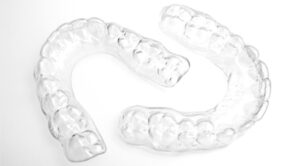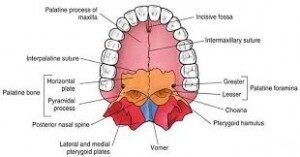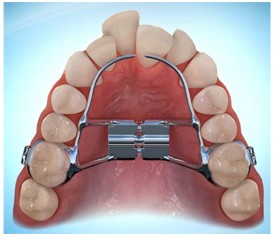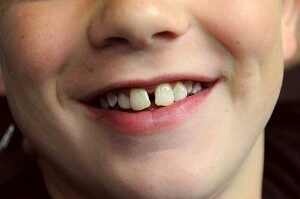December 10th, 2019
Retainers are the most important aspect of orthodontic treatment. If retainers are not properly worn, all your hard work to achieve the perfect smile and a healthy bite using braces or Invisalign can simply go to waste. One important aspect of maintaining your retainers is keeping them clean and free of the harmful buildup of the acid-producing bacteria found in dental plaque (the white fuzzy stuff that collects on your teeth when you don’t brush well). The easiest way to prevent this from happening is to gently brush your retainers with your toothbrush and toothpaste every time you brush your teeth.
In general, if you are brushing your retainers as often as you brush your teeth, your retainers will stay relatively clean and free of bacteria buildup. If you are “out and about” and don’t have access to your toothbrush, you should gently rinse your retainers with clean water and then brush them when you do have access to a toothbrush and toothpaste. This will prevent the proteins and minerals in your saliva from drying on the retainer and creating what might be referred to as “hard water” stains on your retainer.

When you are no longer wearing your retainer full-time and only while you sleep, a thorough cleaning in the morning after waking up should be sufficient to keep your retainers looking like new. Sometimes despite your best efforts, you will start to get some buildup collecting on your retainers. The best way to get back on track is to soak the retainers in a denture cleaner like Efferdent or Polydent or a generic equivalent. These cleaners are specifically designed for the materials that retainers are made of. However, if you have a retainer with solder joints (rarely used in our office), make sure you use a non-persulfate cleanser like Dentasoak instead of Efferdent or Polydent. Please do not use household cleaners like bleach or other abrasive cleaners on your retainers. This is dangerous if there is any residual cleaner left on the retainer and will be harmful to the retainer itself over time.
Follow these simple guidelines, and you should have a happy and healthy mouth for many years to come.
November 22nd, 2019
So your orthodontist said your child needs a palatal expander? Here is some helpful information to become familiar with what to expect moving forward.
How does it work?
Palatal expanders are a commonly used appliance in orthodontics to make room for crowded teeth, correct crossbites, increase the size of the airway and/or widen a narrow upper jaw. Many of us have held a newborn baby and felt the “soft spots” on their tender little heads. Those “soft spots” are cartilage sutures that have not yet closed in their developing skulls. In much the same way, each of us has a cartilage suture in our upper jaw that splits the upper jaw into two halves. At the onset of puberty, that suture starts to fuse together into one bone. However, prior to the fusion of the bone the upper jaw can be expanded significantly using a palatal expander. As the palate expands, the cartilage is stretched and stimulates bone to fill into the space created by the expander. If given enough time to stabilize, the jaw will then fill in with bone at the new “corrected” width. Pretty amazing!

Interestingly, the lower jaw does not have a suture to match the upper jaw, which limits the amount of expansion you can achieve on your bottom teeth.
What does it look like?

The expander connects to your top molar teeth with little metal rings called “bands”. Wires connected to these bands rest gently on the teeth. There is an activating mechanism in the center of the expander that can easily be turned with a “key” that is given to each patient. Your orthodontist will show you how to use the key – it is really easy! The key will slowly and gently widen the jaw with each activation about 0.25 mm. In our office, one activation is recommended each night before bedtime. Over the course of each 4 day period, the jaw widens just 1 millimeter. While this may not seem like much, within just a few weeks you will have created much more space for the teeth to fit into. You may experience some slight discomfort as the suture starts to open, but this process is relatively pain-free.
As the suture opens, you will often see a space open up between the two front teeth. This is normal and is evidence that the expander is doing its job. After your expansion is complete, the space will naturally start to close as the crowded teeth unravel. Any residual space will be closed with your braces.

How do you maintain the expander?
Keeping your teeth healthy while going through treatment with a palatal expander is pretty easy – it just takes a little extra time and effort when you are brushing and flossing your teeth. Your orthodontist will likely give you some extra little brushes to help you clean well around your expander and show some spots that are commonly missed. A Waterpik or similar device is also a helpful tool to clean around the expander. You should brush your expander the same way you would brush your teeth - until it looks clean and shiny with no white “fuzzies” (plaque) sitting on it.
Before you know it, you will have the stunning smile you have always wanted. Good luck! If you have any questions regarding expanders or orthodontic treatment, give our office a call.
October 28th, 2019
Orthodontic health can be defined as a healthy, active smile that is aesthetically pleasing, with teeth and jaws in good alignment. October is orthodontic health month and a chance to focus on why orthodontic treatment can be a life-enhancing – even life-changing experience. Have you ever known someone who covers their mouth when they start to laugh? Whenever I see this happen, I feel bad for the person who is obviously embarrassed by their smile. Of all the things about our health and appearance, crooked teeth are one of the easiest things to change and the one of the most powerful changes to observe. And with good retainer wear, it is permanent! Teeth don’t get wrinkled or saggy and with proper care and maintenance they will be beautiful for a lifetime.

You also don’t have to feel like you are being vain by seeking out orthodontic treatment. Unlike some other cosmetically oriented procedures – orthodontic treatment actually improves the health of your teeth. Well-aligned teeth and jaws have a lower risk of fracture, tooth decay, and periodontal disease. Straight teeth are literally healthier than crooked teeth. A beautiful smile does require braces or Invisalign in most cases – there are very few of us who are born with perfectly aligned teeth. While the process of getting to that final amazing smile can take a bit of time and effort, it is well worth it. Give Budd Orthodontics in Phoenix a call and let us get you on the path to a better you. You will be so glad you did. Happy Orthodontic Health Month!
September 24th, 2019
As an orthodontist I am often asked questions from worried parents about teeth that haven’t grown in yet. As parents we have all been there in one way or another – our child’s friends may seem to walk, talk, throw a ball, or lose a tooth earlier than our child and we want to make sure there is no cause for concern. We want to be assured we are giving our children all the care they need to be successful in life. There is nothing wrong with this and it’s only natural to want to be certain that all is well.
When it comes to tooth eruption, there can be significant variation from one child to another. Below you will see a diagram created by the American Dental Association that gives a pretty good guideline for when normal eruption patterns usually occur. However, 6-12 months beyond the guidelines below would still fall into what I would consider a very normal range.

There are two main reasons why there is such a wide age range for normal tooth eruption. First would be the fact that girls tend to develop physically faster than boys on average. It is not uncommon in my orthodontic office to see girls who have lost all their baby teeth and have all their permanent teeth (with the exception of wisdom teeth) erupted by age 9 or 10. It is also not uncommon to see boys who still have permanent teeth that have not erupted at age 14 or 15. The second main reason for a wide age range of permanent tooth eruption is genetic variation. Among both boys and girls you will find “late bloomers” or precocious growers. This does not indicate there is something wrong, just that we are all unique.
While most cases of teeth “growing in late” are harmless, there are situations where there may be some cause for concern. One of the most common I see as an orthodontist is a permanent tooth growing in “on top” of a baby tooth that was supposed to be “pushed out” by the permanent tooth but seems to be anchored firmly in place. This situation can cause the permanent tooth to grow into a much different position than it normally would and further disrupt the sequence of eruption for other teeth that still need to grow in. We refer to this situation as ectopic eruption. Usually I would want to have the child’s dentist “wiggle out” the baby tooth so that the permanent tooth can grow into its proper position. Another common situation orthodontists encounter is baby teeth that are present long after their counterpart on the other side of the mouth has exfoliated. This is usually indicative of a more serious problem – that child is usually either congenitally missing a tooth (born without it) or has an impacted tooth (the tooth is stuck and can’t erupt). These situations almost always benefit from orthodontic intervention.
If you are concerned about your child’s dental development, follow the recommendation of the American Association of Orthodontists and have your child evaluated by an orthodontist at age 7. By this age, permanent teeth are starting to erupt and problems that might become severe in the future can often be treated early with a more simple solution. Please come visit us at Budd Orthodontics for a complimentary consultation to learn more about orthodontic treatment for your child.













 Website Powered by Sesame 24-7™
Website Powered by Sesame 24-7™